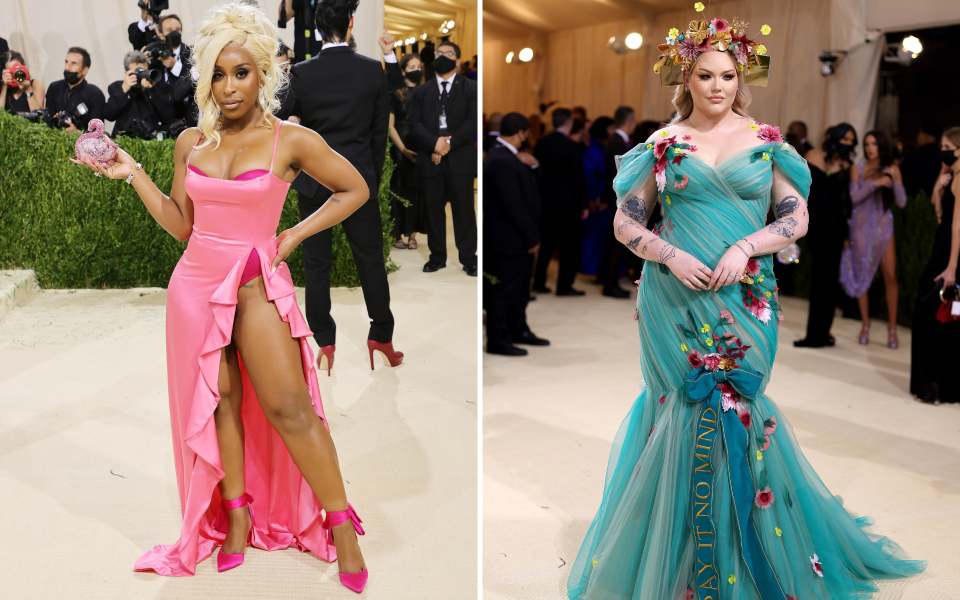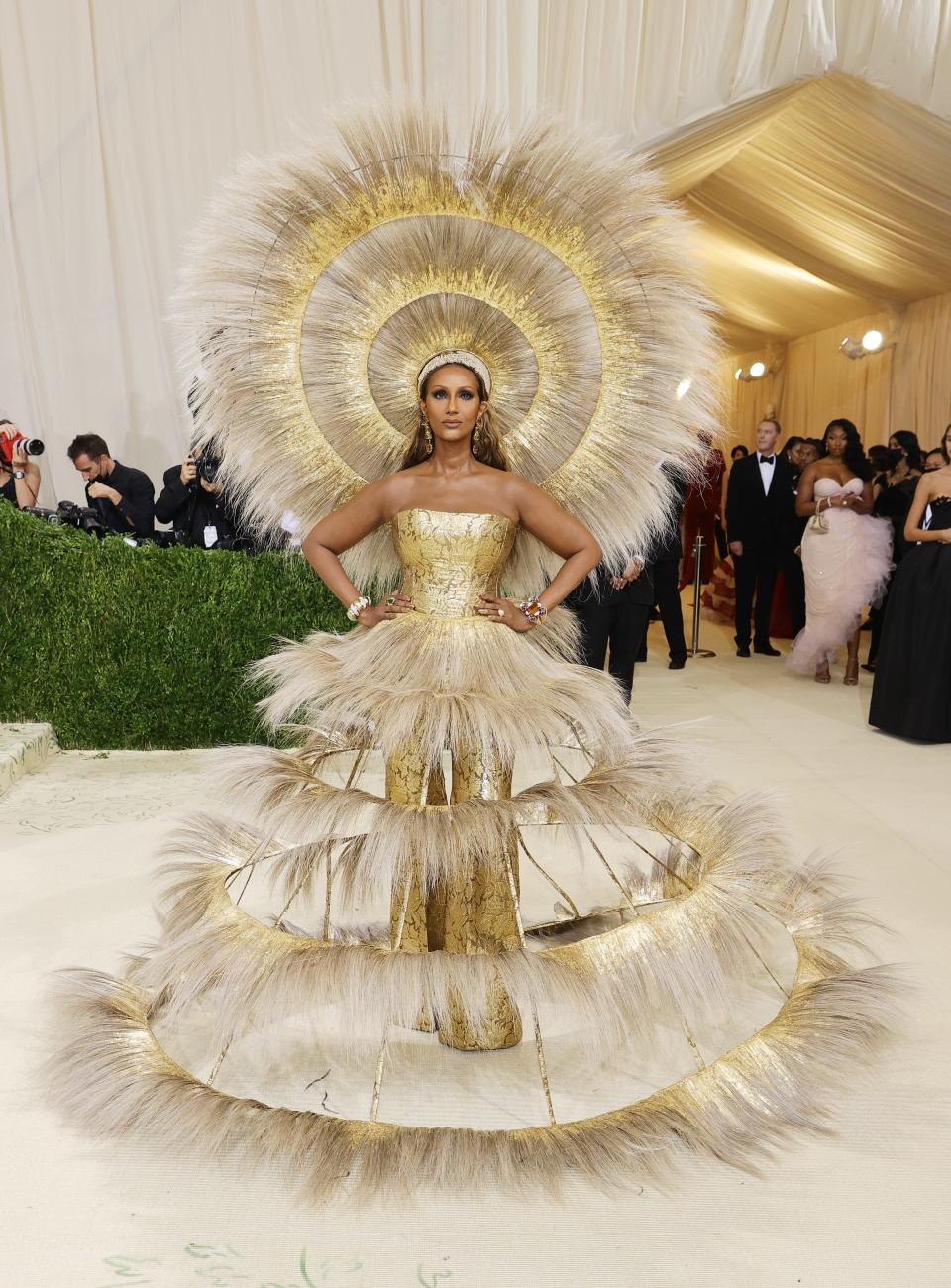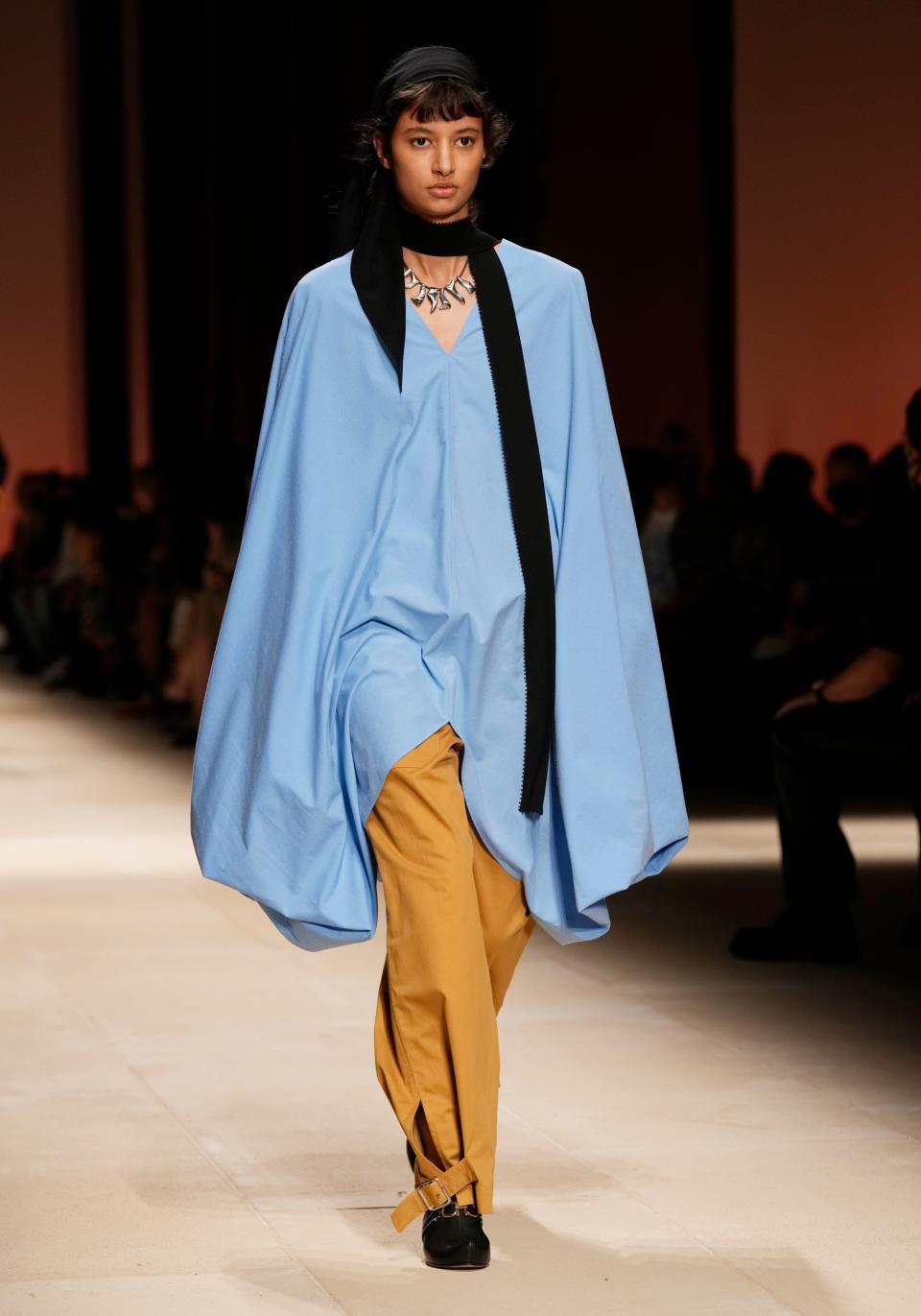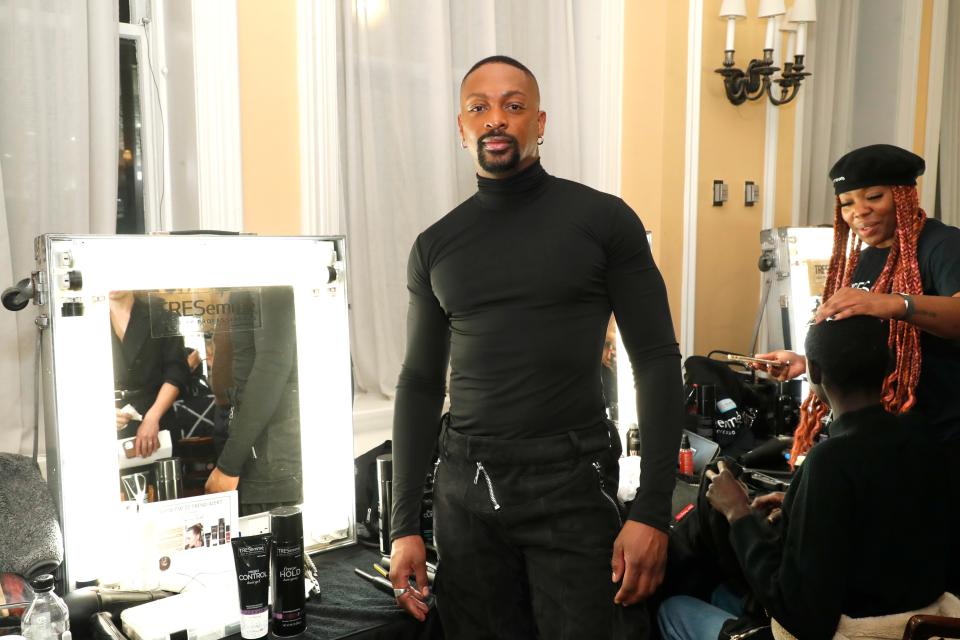The Met Gala's exclusivity is outdated. How can fashion embrace inclusivity's cutting edge?
All eyes are on the Met Gala to watch designers push the envelope of fashion, but eyes are also watching a historically exclusive fashion industry that's proven itself hesitant to push toward inclusion.
The Met Gala's high-profile invitees are encouraged to think outside the box for red carpet looks which have included crystalized miter hats, dresses with dripping wet optical illusions, and unexplained green robot children in the past. The outfits bring attention to various fashion houses and to celebrity names as they strive to be placed on an unofficial list of the gala's best dressed.
An invitation to the Met ball, often selected by Vogue editor-in-chief Anna Wintour, is typically reserved for Hollywood and fashion's most elite. But changes have been made after the industry has reckoned with accusations of being too exclusive, causing the steps of the Metropolitan Museum of Art to look a bit different in recent years.
Met Gala 2022: How to watch, what to know as the stars take on Gilded Glamour
"Every year it's a who's who of who's invited," says fashion psychologist Dawnn Karen, who is also a professor at the Fashion Institute of Technology and founder of Fashion Psychology Success. "But when the Met Gala is not inclusive, then it isn't really highlighting fashion. … (The guest list) tells you who they value and who they do not value."
High fashion can’t be truly inclusive without a diverse team of people calling the shots, experts argue. But because of the industry's interest in selling an aspirational, unattainable fantasy, it may never be able to change until cultural standards of beauty steer away from thin and white or until new diverse talent is embraced.

Last year, the gala took two steps forward by inviting beauty influencer Jackie Aina, who was the first Black content creator ever to attend Met Gala, and YouTuber Nikkie de Jager, who paid homage to LGBTQ activist Marsha P. Johnson with her gown. But the same event also took one step back as it ignored a handful of Black designers.
Formula 1 driver Lewis Hamilton publicly corrected the invite list of the 2021 gala by paying for tickets of three Black designers — Edvin Thompson of Theophilio, Kenneth Nicholson and Jason Rembert — to attend their industry's magnum opus event.
"These designers," Lewis wrote on Instagram, "Deserve this moment just as much as any other designer who attends the Met Gala."
Fashion designer Tracy Reese, who serves on the Council of Fashion Designers of America's board of directors and has been in the industry for more than 30 years, says minority designers like herself were "discouraged" from thinking they'd ever attend the gala in the past.
"We see more color on the red carpet. But in terms of industry representation, for designers of color that's been very limited," Reese says.
While young minority designers have been overlooked, the gala's legacy designers are ever-present, even after facing diversity and inclusion faux pas within their operations.
Met Gala designers' history of missteps
Balenciaga, the designer behind Kim Kardashian's incognito Met Gala look, was called out for cultural appropriation in 2021 after releasing their boxer-peeking sweatpants, retailing $1,190 for a style made popular by hip-hop culture and historically denounced and considered lesser by legacy fashion.
Supermodel Iman turned heads in her Dolce and Gabbana (designed by Harris Reed) gown at last year's Met Gala. But just months before, the fashion house was suing fashion bloggers who reposted anti-Asian comments allegedly attributed to one of the label's designers.

Prada and Gucci each had their time under the sun of call-outs after launching designs that stirred blackface controversies.
Racism in fashion: From Gucci to Prada, luxury fashion brands challenged to confront racist attitudes
"Social media has played a role," says Aina of the recent backlash fashion houses have faced. "You can't really ignore a lack of diversity anymore – people will absolutely make noise, will absolutely call you out and it just makes it so that it's harder to sweep things under the rug."
Karen says "the old guard" of executives is keeping the fashion's exclusive standard in place and until there's new talent, "these things (will) still continue."
More: Director Spike Lee boycotts Gucci, Prada brands over blackface fashion
The needle on fashion inclusion started to nudge forward as Black Lives Matter protests in the summer of 2020 made industries rethink their practices, but the rethinking came "way too late" says longtime business of culture journalist Christina Binkley.
"If it takes a massive scandal and your brand being nearly canceled to start thinking about the importance of diversity and inclusion, then you're way, way, way too late," Binkley says.
When luxury fashion lined up social media posts to show solidarity with Black Lives Matters protests in 2020, more blowback followed.
Transgender model and actress Munroe Bergdorf jumped on L’Oreal’s #BlackoutTuesday posts to accuse the beauty brand of hypocrisy for having fired her when she complained about racism. U.S. trans actress Tommy Dorfman, who once appeared in a campaign for Salvatore Ferragamo, called out the Italian luxury brand for what she called a "homophobic and racist work environment.”
"I think that it absolutely feels out of date, and unfashionable and uninteresting for there not to be diversity," Reese says. "I think those walls are breaking down and not just in terms of color, it's also in terms of size, and deciding what is and isn't beautiful."
Have brands with inclusion scandals improved?
After facing negative feedback over the past few years, many fashion brands have ushered in diversity councils and inclusion initiatives.
L'Oreal rehired Bergdorf after her callout; however in a statement to WWD, Salvatore Ferragamo said they were surprised by Dorfman's comments and added that there's "no evidence" of her critique of the label's work environment.
Binkley says sometimes many European brands can be farther removed from understanding racism in America and have had a harder time reacting to pushes for diversity.
"Somebody who grew up in (Italy, might not) grasp what the civil rights movement in America meant, what slavery for Americans meant – on the one hand, they really need to because America is a big market and they're marketing to America," Binkley says.

At New York Fashion Week in February, nonprofit organization Color of Change teamed up with The Black in Fashion Council, IMG, and model Joan Smalls to introduce an inclusion rider for the fashion industry to lay out guidelines to steer fashion's post-reckoning promises "from rhetoric to action."
Small bits of action have been seen with diverse creative director hires including Rhuigi Villaseñor for Bally and June Ambrose for Puma. Major fashion publications have more diverse leadership with Edward Enninful at the top of British Vogue's masthead and Samira Nasr leading Harper's Bazaar. But the industry still has a way to go.
"It's important that we're talking about everything from size, color, gender, you name it," Reese says. "We've got so much ground to make up for."
According to CFDA and PVH's 2021 State of Diversity, Equity and Inclusion in Fashion report, fewer Black fashion industry employees (57%) believed their company was doing enough when it came to racial and gender inclusivity compared to white counterparts (77%) and less than half of Black respondents who agreed (44%) believed these measures would result in permanent change.
Budding designers are key fashion's inclusive future
To be fashionable goes hand-in-hand with being forward-thinking. Established labels could benefit from calling on budding designers, and up-and-coming designers could benefit from legacy label recognition.
Karen says the gap between new designers and major fashion houses is because the latter is often "high on the perch" and unable to see what's coming through the ground level.
"Those opportunities have to be created for gatekeepers and newcomers to even converse," Reese says. "What's been good to see is how many up and coming designers of color are being selected for things like (CDFA and Vogue's) fashion fund or Woolmark prize."

Moments of exposure, like the Met Gala, are key in bringing new culture to fashion through young talent.
"It's easier to incorporate that ethos of diversity and inclusion if you're starting new, rather than trying to guide a huge ship in a new direction," Karen says.
While the world waits to see their favorite celeb on the carpet, the industry could benefit on taking note of who they left out.
White men still run the fashion industry: Report shows there's a long road ahead toward inclusion
Reese says its "necessary" for us to include new voices in fashion, if the industry doesn't it will come complacent and irrelevant like last season's wardrobe.
She adds: "We get lazy and go for what's easy. And we stop exploring. We stop being curious. And that's really unfashionable, isn't it?"
This article originally appeared on USA TODAY: The Met Gala's high fashion labels has a problem: exclusivity


